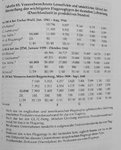The YP-38 was about 3,000lbs heavier not 4,000lbs. that is empty weight.
Almost 1,5 tons is still a pretty big difference.
It is quite likely that niether plane had armor or self sealing tanks.
Changing from Jumo 210s to DB 601s is going to add around 280lbs per engine, dry weight. It could easily be another 100lbs per propellor and so on for the cowlings, engine oil, radiators and so on. does it equel 3000lbs?
No but then we haven't doubled the engine power either. Just gone from 700hp to 1150hp. and at altitudes under 20,000ft.
The P-38 (early versions) could keep making 1150hp all the way to 25,000ft. Later versions could make 1100hp at 32500-34000ft at 2600rpm (high speed cruise). of course it took the heavy, bulky turbo-charger system to do it.
So the weight goes up 15%, while power jumps 60% (for DB-601A, 1939), or 90% (601E, 1941). Looks a bargain for me.
What altitude did you want the FW 187 to fight at?
From 0 to 30 000ft?
"Since I was never fond to evaporative cooling, the up-engined FW-187 would've used regular one."
Yep, but since they used that system to get less drag (more speed) it means that the plane with a regular system is slower.
The added power takes care about that.
And then we get to the CG and load factor problems. Most of the weight is in front of the CG which requires shifting items of equipment and/or ballast and/or a rear fuselage stretch to balance things out. Not impossiable but not done at zero cost to performance. Did the FW 187 V6 have any guns or did the lack of armament help the CG issue?
I'd mount radiators at the back of nacelle, and perhaps shift armament backward in order to compensate for added weight.
Load factor. what was the load factor of the original design? just for illistrations sake let's say the FW 187 had a load factor of 7 'G's. at 11,000lbs. Now if we up the weight to 12,000lbs the load factor drops to about 6.4 'G's and at 13,000lbs it drops to 5.92 'G's.
Now maybe the FW 187 had a reserve of strength and doesn't need any beefed up structure and maybe there is no reserve of strength.
We don't know that.
By the way, The P-38 carried 992lbs worth of guns and ammo. Heavy armament usually means heavy airplanes.
Agree.
.

